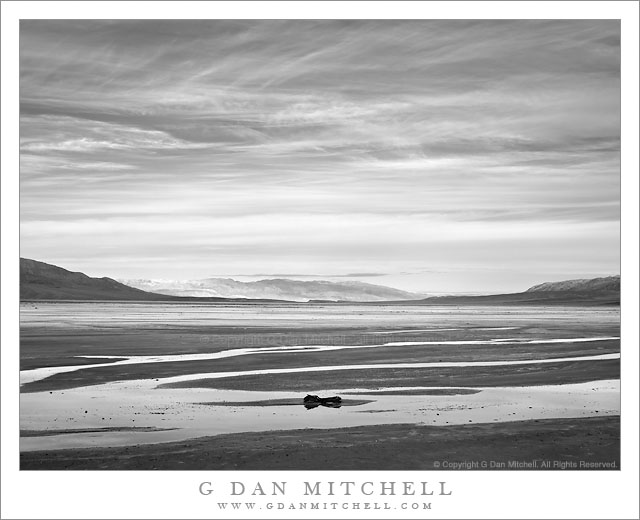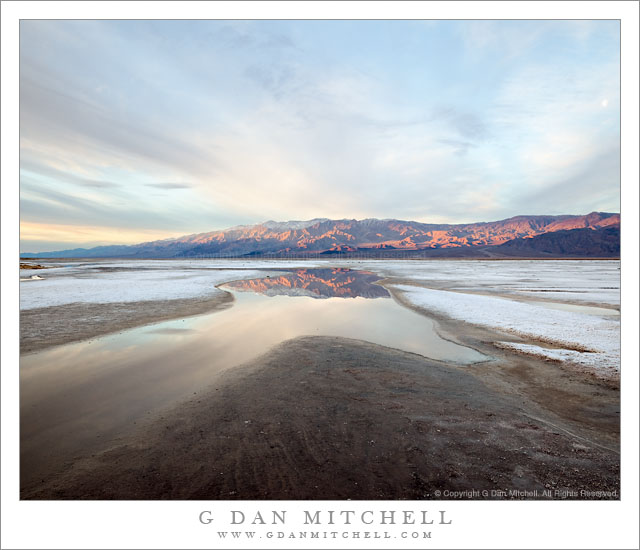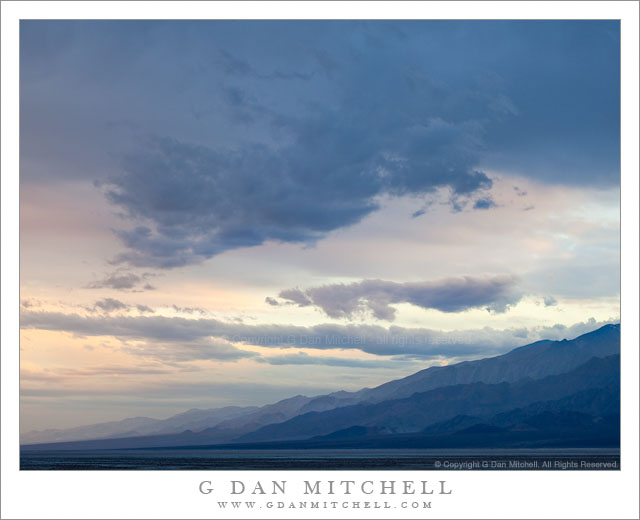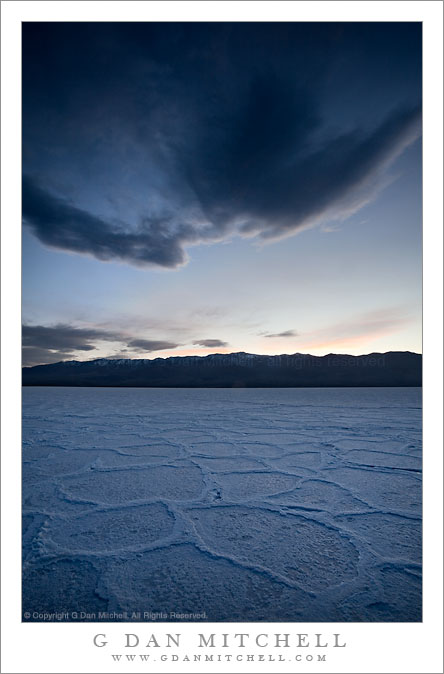Branch, Water on Salt Flats. Death Valley National Park, California. February 21, 2011. © Copyright G Dan Mitchell – all rights reserved.
A forelorn branch sits near pools of reflecting water on salt flats of Death Valley National Park.
After the brief dawn light on the Panamints ended (see the photograph I posted yesterday) and the world went gray over in that direction, I noticed this odd log or branch sitting out on the mud in the salt flats between some of the ponds that streak this section of the flats. While the two minutes of beautiful color on the Panamints had ended, the increasing light was transforming what had been a fairly solid covering of gray into a transparency that revealed interesting layers and patterns of clouds in the morning sky.
I moved a bit closer and made one final sequence of Death Valley photographs before heading back to Stovepipe Wells to take down my camp and start the long drive home. I tried a couple different compositions, including some in which I was closer to the log, but in the end I prefer this one that put some distance between it and me and, I think, suggests the huge spaces that are among of the most compelling characteristics of this landscape.
G Dan Mitchell Photography | Flickr | Twitter | Facebook | Email
Text, photographs, and other media are © Copyright G Dan Mitchell (or others when indicated) and are not in the public domain and may not be used on websites, blogs, or in other media without advance permission from G Dan Mitchell.




